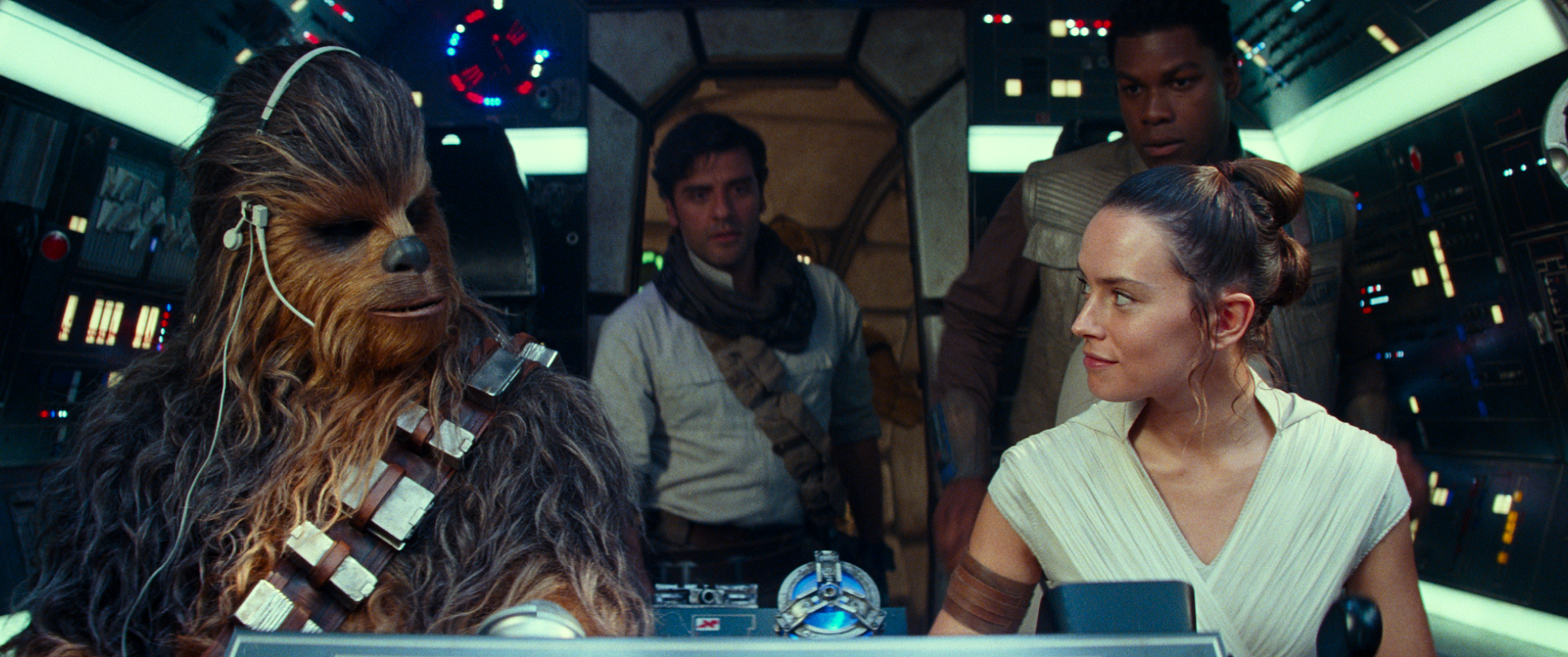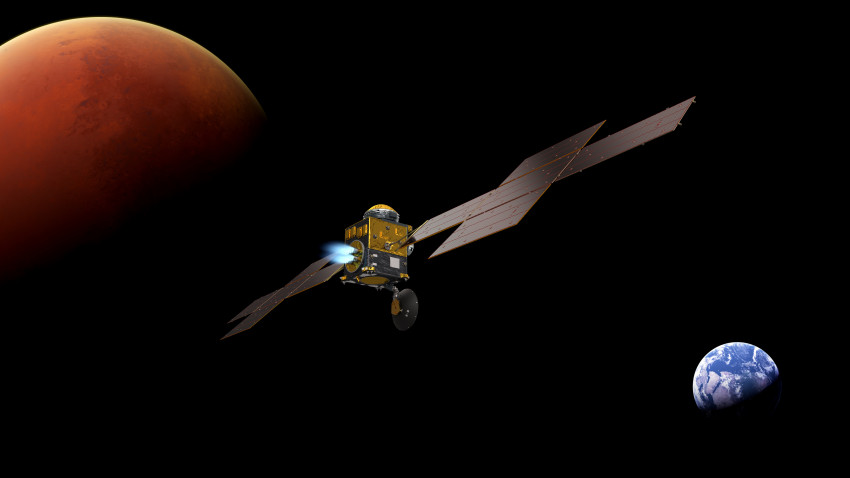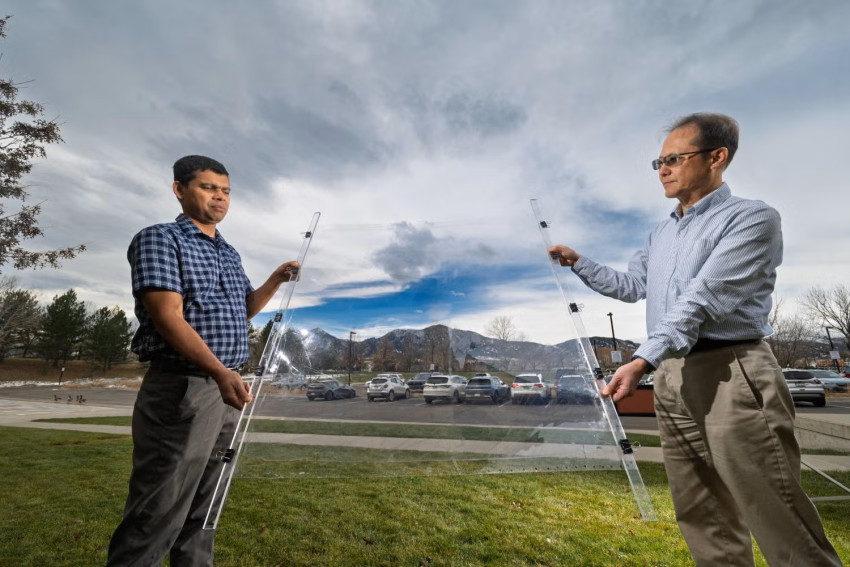
Science of Star Wars
The latest instalment in the Star Wars saga – Star Wars: The Rise of Skywalker – has arrived, to the joy (and maybe dismay) of many franchise fans. The film series follows the primarily fortunes of the Skywalker family such as Anakin (who later becomes Darth Vader), Luke and Leia, and Kylo Ren, one of the principle antagonists of the current trilogy. It’s a real family affair.
Klik hier om dit verhaal in het Nederlands te lezen.
Every Star Wars film starts with the distinctive opening crawl where the film’s title, episode number, and a summary of events prior to the film slide slowly upwards on a background of stars. Before all of that, the films open with the precursor text “A long time ago in a galaxy far, far away….” Despite the fictional events of Star Wars franchise taking place in a distant galaxy, the technologies in the films could have implications for our Milky Way Galaxy, and more specifically planet Earth. Yes, we just might be transitioning to a society filled with Star Wars-like technologies.
A Helping Hand for the Skywalkers
As you can imagine, fighting with lightsabers is quite hazardous. Just ask Anakin and Luke Skywalker. Anakin lost part of his right arm during a lightsaber duel with Count Dooku in Star Wars: Episode II – Attack of the Clones while Luke Skywalker lost his right hand during a confrontation with Darth Vader in Star Wars V: The Empire Strikes Back. Fortunately for both, advanced technologies came to the rescue and provided them with robotic prosthetics.
When Star Wars V: The Empire Strikes Back was released in 1980 the prospect of robotic prosthetics would have seemed like science fiction to many. However, robotic prosthetics are very much science fact. For example, Open Bionics is a UK based company that produce a 3D-printed lightweight and affordable bionic arm known as the Hero Arm. The arms even come with custom covers including one that looks like the exterior of Poe Dameron’s BB-8 droid. Then there’s the Touch Hand 4 – a low cost prosthetic hand developed by Touch Prosthetics in collaboration with the Nelson Mandela University in South Africa amongst others. Their aim is to provide an accessible prosthetic technology for people in South Africa and Africa as a whole.

Robotic prosthetics can be controlled in a variety of ways. First, there is myoelectric control where sensors measure the deformation of muscles around a residual limb. These signals are there analysed with the aid of advanced algorithms and converted into instructions for the prosthetic. Open Bionics’ Hero Arm uses myoelectric control. Second, there is electromyography (EMG), which measures the electrical activity of muscles. Like myoelectric control, trained computer systems convert the signals into particular actions or movements. The Touch Hand 4 relies on EMG electrodes to measure electrical signals.
Fundamentally, myoelectric control and electromyography (EMG) deal with signals related to movement that originate in the brain. These electrical signals are generated by the upper motor neurons, which are located in the cerebral cortex and brainstem. It is possible to directly measure these electrical signals from the brain using invasive or non-invasive means. In electrocorticography (ECoG), electrodes are implanted on the pia matter of the brain to measure electrical impulses from neurons. For instance, in October 2019, it was announced that a quadriplegic Frenchman used an ECoG-controlled exoskeleton suit to walk again. Controlling prosthetic technologies using signals directly measured from the brain might be more intuitive and in line with how Luke Skywalker controls his robotic hand.
And when it comes to controlling the Force – the energy field manipulated by the Jedi – it is important that the prosthetic hands and arms in Star Wars provide haptic feedback for the wearer where the prosthetic can decipher information on the texture, weight, or temperature of objects. This would allow the wearer to know how hard to grip an object for instance, a sensation that is communicated with sensory neurons in the body. Haptic prosthetics will be the next stage of robotic prosthetics and will allow wearers to more naturally interact with objects around them. Perhaps it might also allow for greater control of the Force. It’s just what Luke Skywalker and Rey would want.
Service Robots – C-3PO and R2-D2
Star Wars is full of alien races such as the Wookiees (Chewbecca and the like) and the Ewoks (the Teddy Bear-like creatures from The Return of the Jedi). Nevertheless, artificial robotic entities – more specifically droids – play a key role in the narratives. For instance, Attack of the Clones features a huge droid army under the command of the Separatist movement led by Count Dooku. Of course there are friendlier intelligent droids in the films such as C-3PO, R2-D2, and BB-8.

The droid C-3PO was rebuilt by Anakin Skywalker in The Phantom Menace and designed to help with communications between groups or individuals while R2-D2 and BB-8 are repair droids that act as mechanics on X-wings and starships. Given that theses droids are designed to help individuals with particular tasks they can be defined as service droids or robots.
A service robot is a robot that can perform specific tasks or services to assist someone. There are many examples of service robots in modern society such as the Starship Delivery Robots (unfortunately they don’t deliver in space), Softbank Robotics’ Pepper the robot (a greeting robot), and the VARRAM Pet Fitness Robot (a robot that can exercise your pets). In terms of assistive robots, there is also the MySpoon robot, which can help people to eat, and the Barrett WAM Arm, which has been adapted to help people put on their shoes. Although these robots might not look like C-3PO or R2-D2, they are designed to assist us with some of our daily activities. As of yet, we don’t have a service robot that can repair X-Wings.
Do We Need Emotional Service Robots?
On a number of occasions, R2-D2 and BB-8 have used one of their gismos to save the day. For instance, BB-8 repairs the guns in Poe Dameron’s X-Wing during the opening scene of The Last Jedi. But when things go wrong, R2-D2 and BB-8 tend to let out a shriek of disapproval indicating that they seemingly feel discomfort or even pain. On the other hand, C-3PO is a constant worrier, fretting and panicking about almost everything. But should service robots or droids like these express “emotions”?

The droids C-3PO, R2-D2, BB-8 can all be argued to be depictions of what we might refer to as AI. Their verbal communications contain acoustic cues that we would associate with emotions with these “emotions” possibly regulated by an empathy module. Unfortunately C-3PO’s empathy module seems to be stuck on a setting that leaves him constantly in an anxious state. While his fretting provides comic relief in the films, practically it’s of no benefit to those around him. His continual agitation might instigate similar emotions in those that he’s supposed to help.
In the real world, “emotional” service robots might carry out useful tasks in modern society such as helping individuals dealing with loneliness and depression. However developing a droid like C-3PO would not be constructive for society. We don’t need a robot worrying and fretting about everything all of the time. It could adversely affect the psychological state of individuals. Sorry to disappoint but we should never ever exactly copy C-3PO. On the other hand, R2-D2 would be quite useful, particularly when it comes to carrying out repairs in dangerous environments such as sea, on an oilrig, on a space station, or even on Mars. We’ll just have to tone down the emotions of a real-world R2-D2!
Volumetric Displays
In the opening scene of The Last Jedi, Poe Dameron launches a daring attack on the Dreadnought – one of the First Order’s greatest starships. As Dameron takes out the Dreadnought’s cannons, a perplexed General Armitage Hux contacts Captain Canady via the holoprojector communication device urging him to shoot Dameron’s X-wing down.
Holoprojection communications are a mainstay of Star Wars film with perhaps the most famous communication being the recording stored on R2-D2 by Princess Leia that was found by Luke Skywalker in A New Hope. One small issue about the hologram images in the films is that they are a little distorted and unclear but Earth-based researchers are working on an approach that could create clear and crisp 3D images that are better than holograms.
The technology is referred to as volumetric display and involves the trapping of a cellulose particle in a photophoretic optical trap. In some cases the particle is made from black liquor, a by-product in papermaking. The term photophoretic means that the particle is suspended in space and can be moved in a certain way using beams of light. As the cellulose particle is moved through space it is illuminated with red, green, and blue light. This leads to the creation of a 3-D image in space. When people view from the image from different angles, they will each see the image from a slightly different perspective. This is impossible with traditional holograms.

One volumetric display technique is know as Optical Trap Display (OTD) and was developed by researchers based at Brigham Young University, USA. Using OTD, the researchers were able to create images of butterflies, prisms, and even a projection image of one of the researchers! Of course the holoprojection communication technologies in Star Wars transmit moving images and sound. In a recent Nature paper, researchers at Tokyo University of Science outlined a new volumetric display technique called multimodal acoustic trap display (MATD) that can deliver images, sound, and even tactile sensations. This is an extraordinary leap in terms of volumetric displays and potentially takes us closer to bettering the holoprojection communication devices from Star Wars.
Hyper Drive and Light Speed
Outer space is vast and the “galaxy far, far away” that acts as the stage for Star Wars is quite likely enormous. Our Milky Way Galaxy has a diameter of over 100,000 light years. A light year is the distance travelled by light in one year, equivalent to almost 10 million million kilometres. It’s safe to assume that the Star Wars galaxy is equal in size to the Milky Way Galaxy – it might even be bigger. Travelling such huge distances requires something with a little more punch. Enter the hyperdrive.
Starships in Star Wars travel cosmic distances using a hyperdrive that allows the ships to enter hyperspace – an alternate dimension where ships can travel faster than light. While the Star Wars franchise might be based in another galaxy it still follows the laws of physics of this Universe. One rule is that nothing can exceed the speed of light, as stipulated by Einstein’s theory of relativity.

For Earthlings, developing technologies to access hyperspace might be a little difficult. For one thing we don’t know if it really exists, but there are plenty of theories out on its existence. Another small issue is that we are nowhere close to travelling at speeds that are an appreciable fraction of the speed of light. The fastest spacecraft in history is the Parker Solar Probe, which reached a speed of 343,180 km/h or 95.33 km/s in November 2018. This is roughly 0.03% of the speed of light, which is roughly 300,000,000 m/s. While CERN’s Large Hadron Collider (LHC) can accelerate protons to 99.999999% of the speed of light, we’re a long way from getting spaceships to travel at those speeds.
Perhaps an anti-matter engine might do the trick or we might find a series of wormholes hidden within the fabric of space-time. Until then we’ll just have to satisfy ourselves with sending space probes to explore the planets and moons in our Solar System, and leave the hyperspace travel to the Resistance in Star Wars.
Text: Dr. Barry Fitzgerald is a science communication Officer at TU Eindhoven, physicist, author, and superhero fanatic. He has written a number of popular science books including “Secrets of Superhero Science” and “How to Build an Iron Man Suit”.. Follow him on Twitter, @BarryWScience, Instagram bwscience ansd Facebook @BWScienceNow.
All images by Disney






